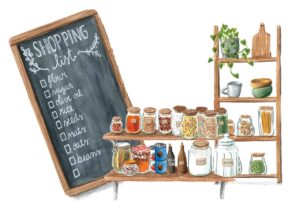There’s nothing quite like the flavour and aroma of fresh herbs plucked straight from your garden. But what happens when your basil, mint, or parsley is growing faster than you can use it?
Preserving herbs is a brilliant way to extend their life, reduce waste, and stock your pantry with flavour for months to come. Whether you’re drying them for winter soups or freezing them for instant pesto, you’ll love having your favourite herbs on hand—all year round.
This ultimate guide to preserving herbs covers five simple and effective methods you can try today, even if you’re just getting started on your Greensteading journey.
Why Preserve Herbs?
Herbs are incredibly rewarding to grow, and even a few pots can yield more than you need at once. Preserving them lets you:
Reduce waste and save money
Capture peak flavour and nutritional value
Build a well-stocked pantry for year-round use
Add variety to your meals with homegrown, organic goodness
And the best part? It doesn’t take a fancy dehydrator or hours of prep to get started.
1. Air Drying – Traditional and Fuss-Free
Air drying is one of the oldest and most natural ways to preserve herbs. It works best for hardy, low-moisture herbs like rosemary, oregano, sage, thyme, and lavender.
How to:
Tie a few stems together with twine and hang upside down in a warm, dry, well-ventilated space out of direct sunlight. In 1–2 weeks, they should be fully dry and crumbly to the touch.
Best for: Hardy herbs like rosemary, thyme, oregano, and bay.
2. Freezing in Oil – For Instant Flavour Bombs
Freezing herbs in olive oil locks in flavour and creates ready-to-use cubes for cooking.
How to:
Chop your herbs finely, pack them into an ice cube tray, and cover with olive oil. Freeze until solid, then transfer to a container or freezer bag.
Best for: Basil, parsley, coriander (cilantro), dill, sage.
Use in: Soups, stews, sautés, roasts—any dish where you’d start with oil and herbs.
3. Herb Butter – A Delicious Way to Store Flavour
Infused butters are a tasty way to use soft herbs and make your meals shine.
How to:
Soften unsalted butter, mix in chopped herbs, and roll into a log using baking paper or store in small containers. Freeze or refrigerate.
Best for: Chives, parsley, dill, basil, tarragon.
Use on: Grilled veggies, fresh bread, baked potatoes, or corn on the cob.
4. Vinegars and Infused Oils – Preserving and Elevating
Preserving herbs in oil or vinegar makes beautiful gifts—and delicious salad dressings.
How to:
Add clean, dry herbs to a sterilised jar. Fill with vinegar (white wine or apple cider) or a neutral oil. Seal tightly and store in a cool, dark place for 2–4 weeks before using.
Best for: Rosemary, thyme, basil, tarragon, oregano.
5. Drying in the Oven or Dehydrator – Quick and Easy
If you want to speed up the drying process, use your oven or a dehydrator.
How to:
Spread herbs in a single layer on a baking tray lined with paper. Set your oven to the lowest possible setting (ideally around 40–50°C / 100–120°F) and leave the door slightly ajar. Check every 15 minutes until herbs are dry and brittle.
Best for: Most herbs—especially if the weather’s too damp for air drying.
Storage Tips
Once your herbs are dried or preserved, store them in airtight containers in a cool, dark place. Glass jars, labelled with names and dates, keep things organised and ready to use.
A Greensteader’s Pantry
Preserving herbs is a small but mighty act of self-reliance. It connects you to your land, reduces waste, and keeps your meals vibrant, even when the garden slows down for the season.
You don’t need to preserve everything at once. Start with your favourites—perhaps a mint vinegar, some frozen basil cubes, or a jar of dried rosemary—and build from there.
With just a few thoughtful steps, you can fill your Greenstead pantry with year-round flavour, straight from your garden.
Want more tips on edible gardens, homegrown storage, and sustainable living? Explore our other Greensteading articles and start cultivating a slower, richer, and more connected life.



